Search
Did you mean: Constantine I?
Search Results
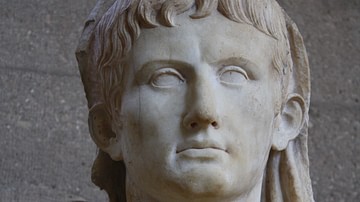
Article
Visual Chronology of Roman Emperors: Augustus to Constantine
The Julio-Claudian Dynasty Augustus 16 Jan 27 BCE - 19 Aug 14 CE Tiberius 18 Sep 14 CE - 16 Mar 37 CE Caligula 18 Mar 37 CE - 24 Jan 41 CE Claudius 25 Jan 41 CE - 13 Oct 54 CE Nero 13 Oct 54 CE - 11 Jun 68 CE Galba 8 Jun 68 CE -...
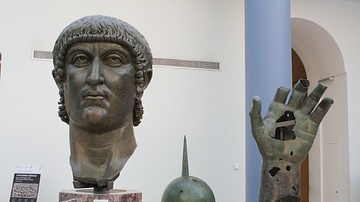
Image
Constantine I Colossus
The head, hand and sphere (symbol of power) from the colossal bronze statue of Constantine I, 4th century CE. The head alone is 1.77 m high. (Capitoline Museums, Rome).

Image
Constantine's Conversion
The Emblem of Christ Appearing to Constantine / Constantine's conversion, oil on panel painting by Peter Paul Rubens, 1622.
Philadelphia Museum of Art.
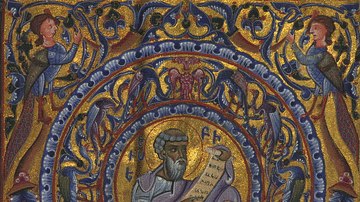
Article
Eusebius on Christianity
Eusebius Pamphili (aka Eusebius of Caesarea, 260-340 CE) was a Christian historian, exegete, and polemicist. He became the bishop of Caesarea Maritima in 314 CE and served as court bishop during the reign of Constantine I (r. 306-337 CE...
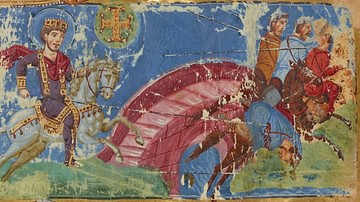
Image
Constantine's Vision
Constantine I's (r. 306-337 CE) vision and the Battle of the Milvian Bridge in a 9th-century Byzantine manuscript. Detail from folio 440 recto of manuscript BnF MS Gr510, dated 879-883 and containing the homilies of Gregory of Nazianzus...

Image
Constantine I
The colossal bronze head from a statue of Constantine I, 4th century CE. The head is 1.77 m high. (Capitoline Museums, Rome).
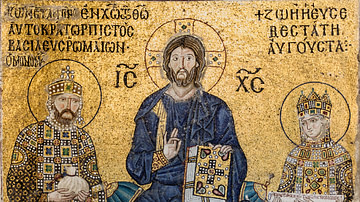
Image
Constantine IX & Empress Zoe
An 11th century CE gold and glass mosaic in the Hagia Sophia of Constantinople depicting Constantine IX Monomachos (r. 1042-1055 CE), Jesus Christ and Empress Zoe (r. 1028-1050 CE).
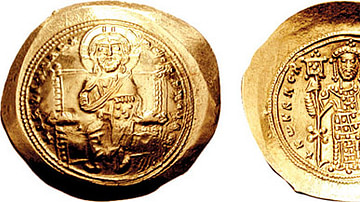
Image
Constantine X Doukas
Constantine X Dukas. Byzantine Emperor, r. 1059-1067 CE.
Gold Histamenon (4.33 gm, 6h). Constantinople mint.
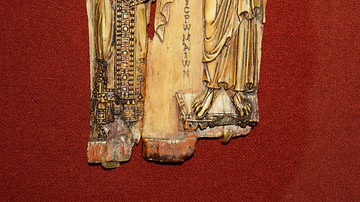
Image
Constantine VII & Christ
This ivory plaque fragment shows Emperor Constantine VII Porphyrogenitus of Byzantium (r. 913-959 CE) being crowned by Jesus Christ. It was carved in royal workshops of Constantinople around 954 CE. (Pushkin Museum, Moscow)
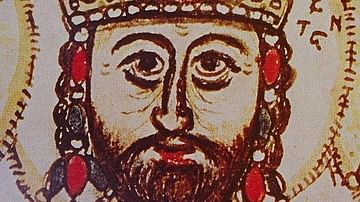
Image
Constantine XI Palaiologos
Constantine XI Palaiologos, the Despot of the Morea (r. 1443-1449 CE) and the last Byzantine emperor (r. 1449-1453 CE)
History of John Zonaras, Mutinensis gr.122, f.294r, Biblioteca Estense Universitaria, Modena